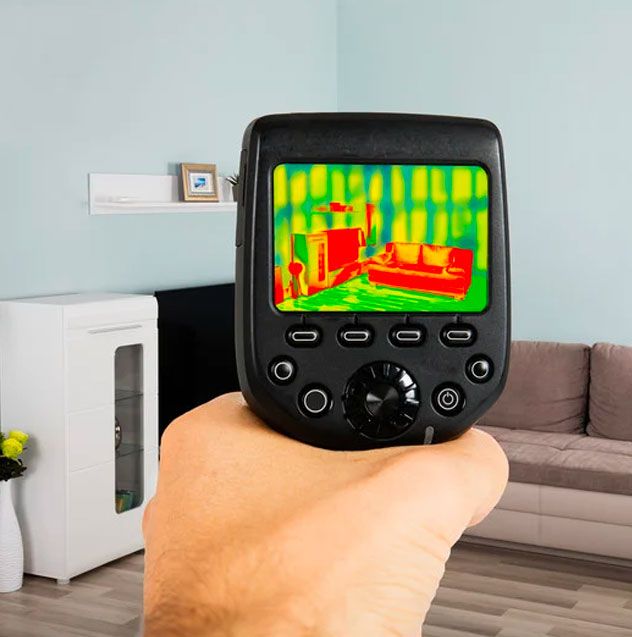Examine This Report about Amazinghazardremoval.com Mold Testing Fairfield
Table of Contents9 Simple Techniques For Amazinghazardremoval.com Mold Testing FairfieldThe Single Strategy To Use For Amazinghazardremoval.com Mold Testing FairfieldOur Amazinghazardremoval.com Mold Testing Fairfield IdeasNot known Factual Statements About Amazinghazardremoval.com Mold Testing Fairfield The Definitive Guide to Amazinghazardremoval.com Mold Testing FairfieldSome Of Amazinghazardremoval.com Mold Testing Fairfield
Unless you're mindful, you might interrupt the mold growth and launch spores throughout your structure. At Paul Sakson Environmental, we give professional mold screening and removal solutions to household, business, and child care centers across New Jersey.With us, you won't need to sweat exactly how your indoor air high quality is influencing your liked ones. For more details, contact us today!.
1.1 The purpose of this standard is to offer standardized procedures to be used for a mold examination. There are 2 kinds of mold and mildew assessments defined in the IAC2 Mold Assessment Standards of Method: (1) Total Mold Inspection (Section 2.0)( 2) Limited Mold And Mildew Assessment (Area 3.0) 1.2 Unless the assessor and customer consent to a restriction of the inspection, the inspection will be done at the key structure and attached parking framework.
Facts About Amazinghazardremoval.com Mold Testing Fairfield Uncovered
1.3 A mold and mildew examination is valid for the date of the assessment and can not anticipate future mold development. Since problems for mold growth in a building can vary considerably with time, the outcomes of a mold examination (exam and tasting) can just be trusted for the time at which the examination was conducted.

The limited mold and mildew assessment does not include an aesthetic evaluation of the entire building, yet is limited to a certain location of the building identified and explained by the assessor. Because of this, moisture invasion, water damages, stuffy smells, noticeable mold and mildew development, or conditions for mold growth in various other areas of the structure might not be examined.
The roof covering. B. The roof drainage system, consisting of gutters and downspouts. C. The vents, flashings, skylights, smokeshafts, and any various other roofing penetrations. II. The examiner is not called for to: A. Walk on any type of roofing system surface area. B. Predict the service life expectations. C. Perform a water test. 4.2 Exterior and Premises I.
6 Simple Techniques For Amazinghazardremoval.com Mold Testing Fairfield
The cladding, flashing and trim. B. Exterior doors, home windows, decks, stoops, actions, staircases, verandas, railings, eaves, soffits and fascias. C. The exterior grading surrounding the building boundary. D. Things that pass through the exterior siding or covering materials. II. The examiner is click here to read not needed Going Here to: A. Inspect underground drain systems. B.
Inspect abandons not connected to mold growth or wetness breach. 4.3 Cellar, Foundation, Crawlspace, and Structure I. The inspector will inspect: A. The structure, cellar, or crawlspace including ventilation. B. For moisture breach II. The assessor is not needed to: A. Operate sump pumps with unattainable floats. B. Inspect for architectural problems not associated with mold and mildew development or moisture breach.
Some Ideas on Amazinghazardremoval.com Mold Testing Fairfield You Should Know
The inspector shall inspect: A. The air trainer, circulating fan, and air filter. B. The condensate pump. C. Easily noticeable ductwork. D. Representative variety of supply and return air registers. E. The main humidifier. F. The air conditioning device. II. The inspector is not required to: A. Inspect the cooling coil if not readily obtainable.
Examine the condensate frying pan otherwise readily available. C. Test the efficiency or efficiency of the cooling and heating system. D. Inspect the interior of ductwork system. 4.5 Plumbing I. The inspector shall inspect: A. The readily visible primary water line. B. The easily noticeable supply of water lines. C. The easily noticeable drainpipe, waste, and air vent pipelines.
Warm water source. E. Fixtures such as commodes, taps, showers and bathtubs. II. The examiner is not called for to: A. Test the showers and tubs by filling them with waterB. Test whirlpool tubs, saunas, heavy steam Discover More Here areas, or warm bathtubs. C. Inspect for plumbing problems that are not related to mold and mildew growth or moisture breach.
The assessor will examine: A. Insulation. The assessor is not needed to: A. To move, touch, or interrupt insulation. B. Inspect for vapor retarders.
Unknown Facts About Amazinghazardremoval.com Mold Testing Fairfield
The examiner shall examine: A. The inspector is not needed to: A. Inspect for indoor issues that are not connected to mold and mildew development or dampness invasion. 4.8 Wetness, Humidity, and Temperature Level I.
Moisture of any room or area of location building that has moisture intrusion, water damage, moldy odorsMusty smells mold noticeable, or conditions conducive problems mold growth. AmazingHazardRemoval.com Mold Testing Fairfield.
Examples of the interior air and the outside air should be considered comparison. There ought to not be any kind of mold and mildew inside your home that is not located outside. The focus of mold inside a home need to not be greater than the concentration of mold and mildew outside. Maintain in mind that mold spores airborne being tasted can vary significantly in connection with the life process of the mold, climatic and environmental problems, and the quantity of ventilation.
Amazinghazardremoval.com Mold Testing Fairfield Can Be Fun For Anyone
Air sampling might be essential if the mold growth is thought (for instance, mildewy odors), yet can not be identified by a visual evaluation. The function of such air tasting is to figure out the place and/or degree of mold contamination as well as a basic verification that mold and mildew development exists someplace in the building.